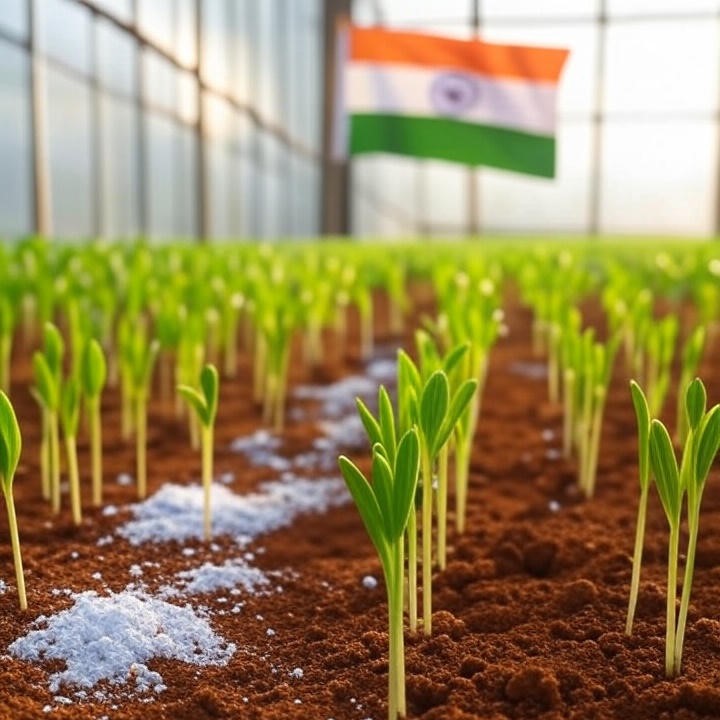Who is the biggest importer of urea?
India is the world’s largest importer of urea, accounting for nearly 30% of global urea imports. The country imports urea to meet its high agricultural demand, especially for crops like rice and wheat, making it a key player in the global fertilizer market.
In 2023, India’s urea imports were valued at over $3.4 billion, highlighting its dependence on international suppliers to sustain domestic agricultural productivity.
Urea Import Price to India: Latest Market Rates for 50 kg Bags
In 2025, the wholesale price of a 50 kg bag of granular or prilled urea in India ranged between $26.5 and $28.5. These prices are influenced by factors such as global supply and demand, currency fluctuations, and import policies.
- Global Supply and Demand
Fluctuations in global urea production and demand directly affect the Urea Import Price to India, causing prices to rise when supply is tight or demand surges.
- Currency Fluctuations
Changes in the exchange rate of the Indian Rupee against the US Dollar impact import costs, influencing the Urea Import Price to India for wholesalers and retailers.
- Import Policies
Government regulations, tariffs, and import quotas play a key role in determining the Urea Import Price to India, ensuring supply stability and affecting overall market rates.
Urea Import Price to India: Key Importers and Suppliers
India sources urea from several key suppliers to meet its agricultural needs. The granular Urea Import Price to India is influenced by these countries’ production capacity, export policies, and shipping efficiency, making supplier choice crucial for stable pricing.
Urea Import Price to India: Current Trends and Price Fluctuations
The Urea Import Price to India is constantly affected by global supply, seasonal demand, and government policies. Monitoring current trends and price fluctuations helps importers and farmers plan purchases and manage costs effectively.
- Global Supply Constraints
Tightening quotas in major producing countries like China have led to increased prices, putting pressure on importers to secure timely shipments and maintain stable Urea Import Price to India.
- Seasonal Demand
The kharif sowing season saw a 12% increase in demand, prompting the government to initiate tenders for 4 million tonnes of urea imports.
- Government Policies
The Indian government has implemented measures to stabilize prices and ensure adequate supply to farmers.
Urea Import Price to India: Government Taxes and Duties Explained
India imposes a basic customs duty of 5% on urea imports under HS Code 31021000. Additionally, there is an additional duty (CVD) of 1%. However, certain exemptions apply under agreements like the Urea Off-Take Agreement with Oman-India Fertilizer Company.

Urea Import Price to India: Demand and Consumption Patterns
India’s demand for Urea Fertilizer is driven by its large agricultural sector and government subsidies. Understanding Urea Import Price to India requires analyzing consumption trends, seasonal needs, and policy support that influence import volumes and pricing.
- Consumption Trends
In FY25, urea consumption increased by 7.2%, driven by agricultural expansion and government support. - Government Support
The government provides subsidies to ensure affordable urea prices for farmers, impacting demand patterns.
Urea Import Price to India: Major Exporting Countries Overview
India imports urea mainly from Oman, China, Qatar, Russia, and Saudi Arabia. The Urea Import Price to India depends on supplier costs, export policies, and shipping efficiency.
- Oman: A significant supplier due to favorable trade agreements.
- China: A major producer with fluctuating export policies.
- Qatar: Consistent supplier with competitive pricing.
- Russia: Emerging as a key exporter with increasing shipments.
- Saudi Arabia: Stable exporter with long-term supply agreements.
Summary
India's position as the largest urea importer globally underscores its critical role in the fertilizer market. The import price of urea is influenced by various factors, including global supply dynamics, government policies, and seasonal demand. IranPetroExport, as a key international supplier, plays a significant role in this trade dynamic. Understanding these aspects is crucial for stakeholders in the agricultural and fertilizer industries.
